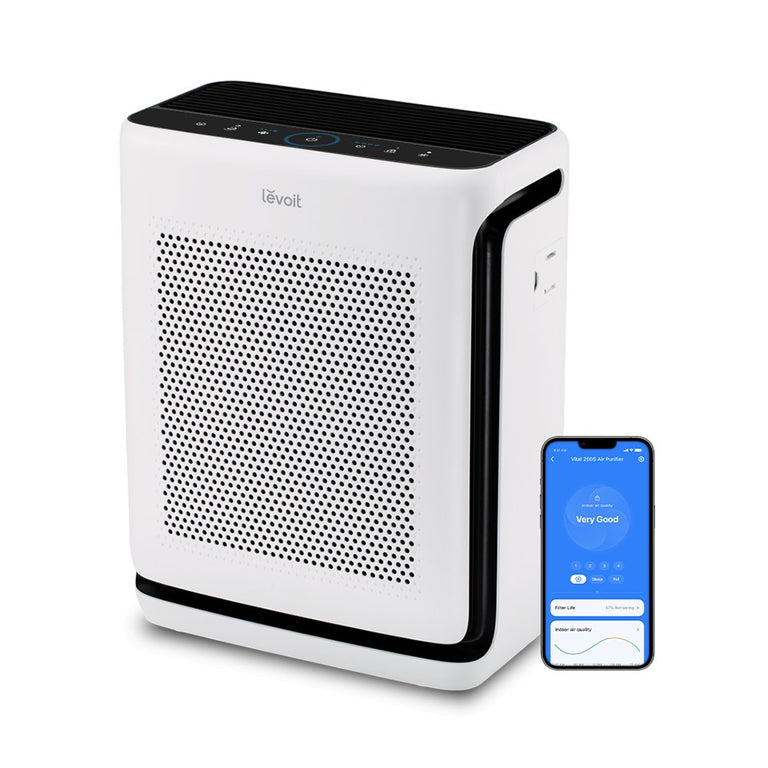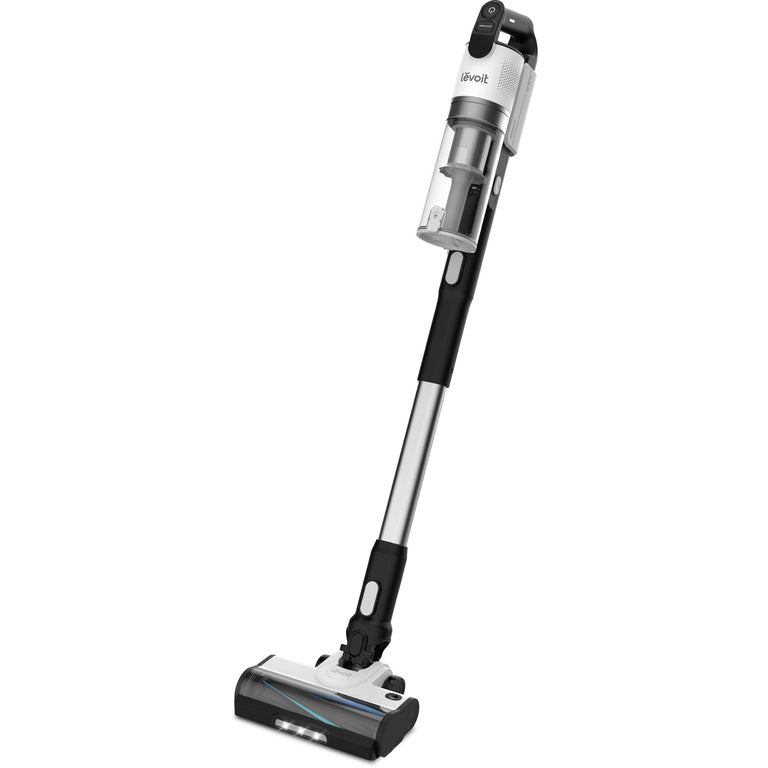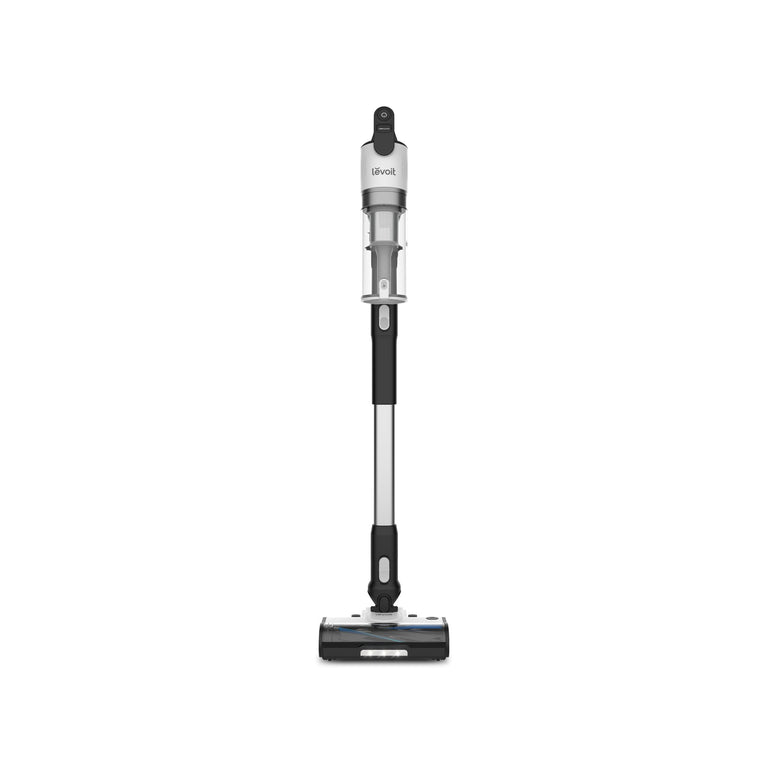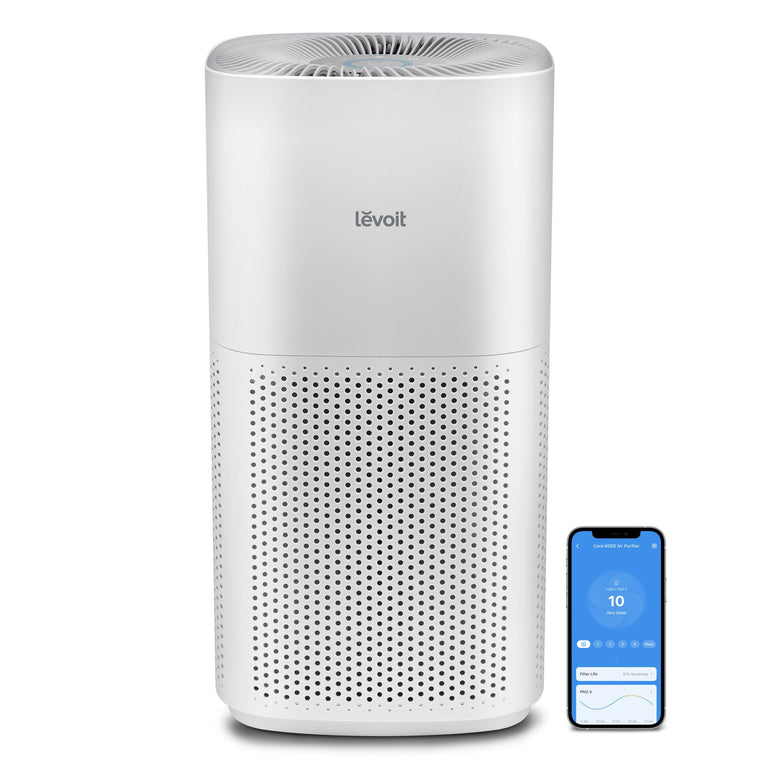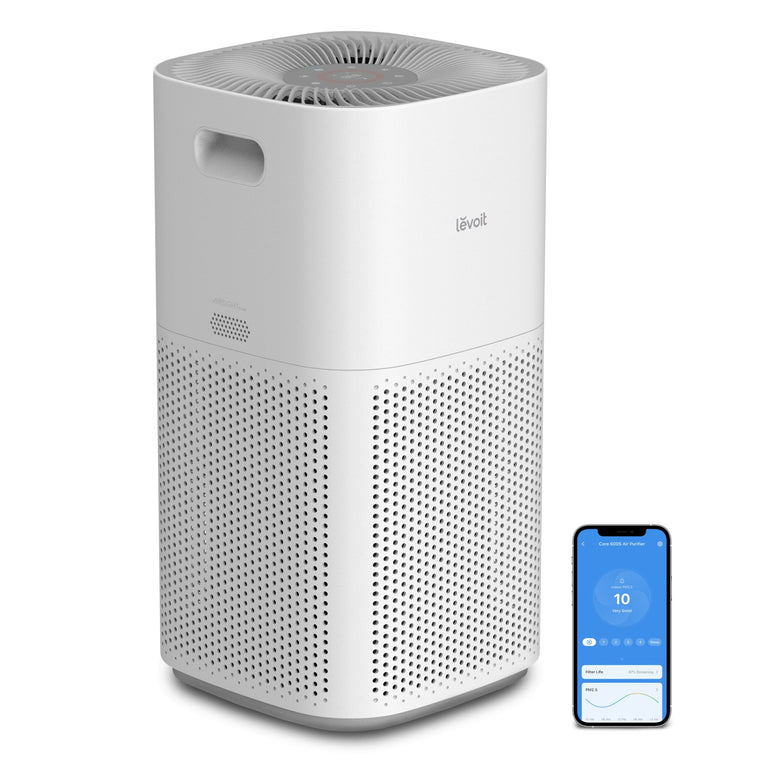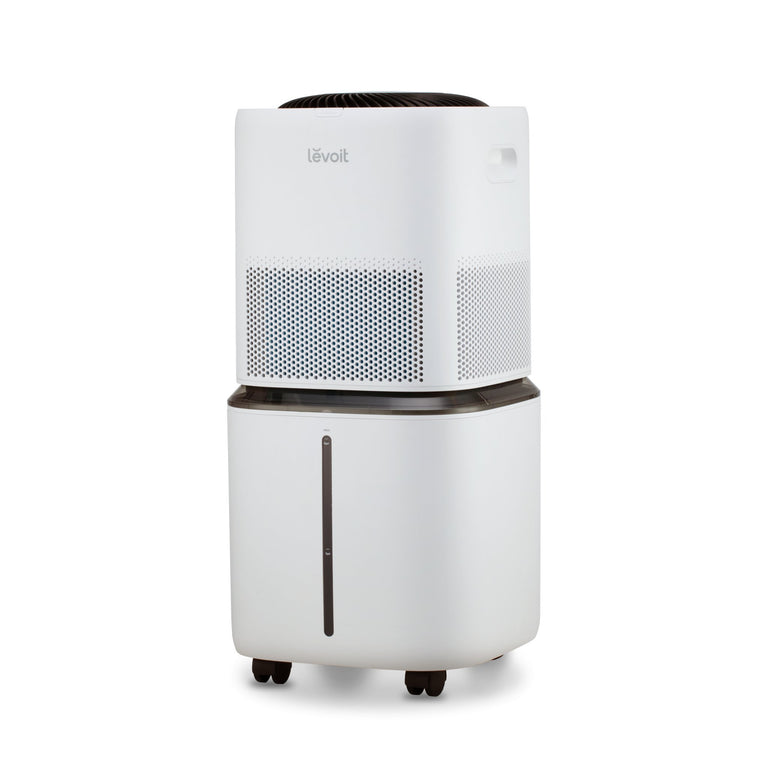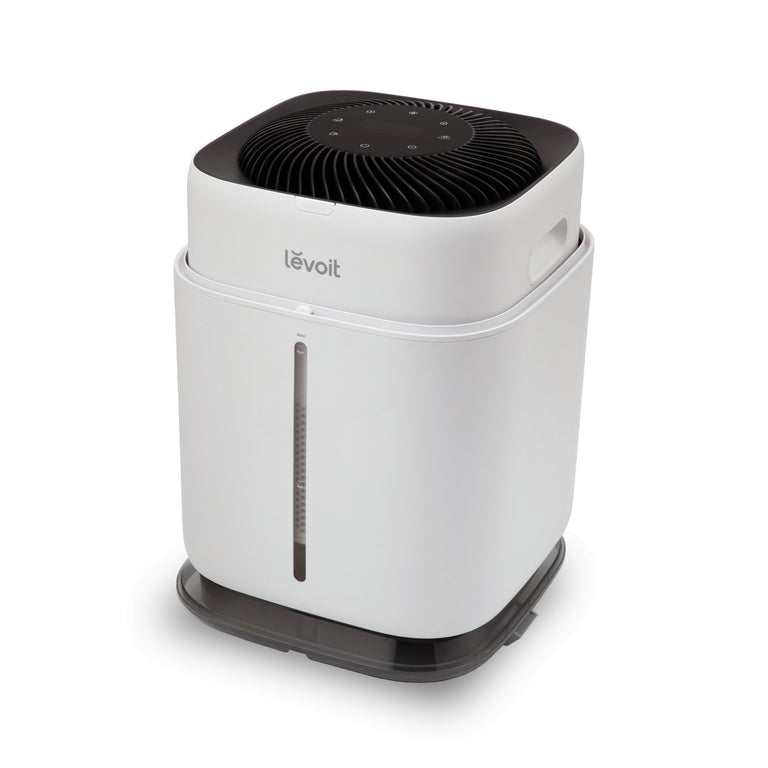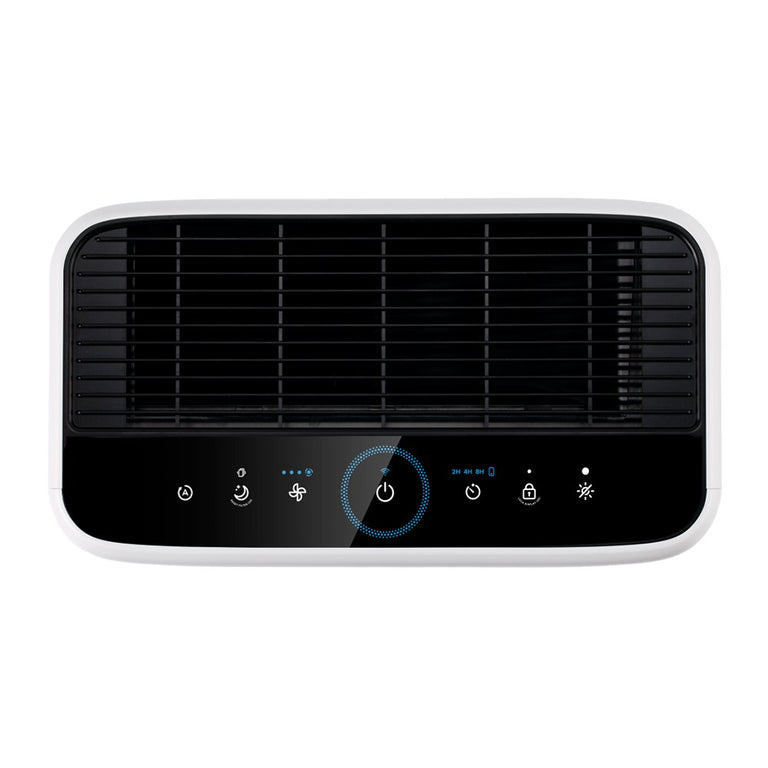
Optimizing Your Indoor Air: Air Purifier Maintenance
-
1 min read
A clean and well-functioning air purifier is the key to better indoor air quality in your home. Air purifiers regularly trap and accumulate dust, dirt, and other particles that can reduce their effectiveness over time. Neglecting air purifier maintenance allows these pollutants to build up in filters and contaminate the filtered air, and dusty appliance exteriors can also spread particulates in the air. That's why it's important to follow a regular maintenance routine; proper maintenance improves air quality, optimizes energy efficiency, and prevents costly repairs or early replacement.
Fortunately, maintaining your air purifier doesn't have to be difficult or time-consuming. With periodic cleaning and replacement of filters, you can keep your air purifier looking, working, and feeling its best.
This guide will walk you through the key maintenance tasks needed to maintain your air purifier and ensure it continues to provide you with clean and fresh air.
Change the Filters
Regular filter changes are a fundamental aspect of air purifier maintenance. Air purifier filters trap dust, allergens, and other air pollutants, so they need to be changed regularly for your air purifier to function properly. The frequency of filter changes depends on the type of filter:
- HEPA filters should be changed every 6–12 months. HEPA (high-efficiency particulate air) filters are tightly woven fibers that capture airborne particles of all sizes—0.3 microns (µm) being the worst kind, or most penetrating particle size (known as MPSS). According to the EPA, this type of air filter can theoretically remove at least 99.97% of dust, pollen, mold, bacteria, and any airborne particles with a size of 0.3 microns (µm). Check your filter every six months and replace it when airflow seems reduced.
- Activated carbon filters need replacement every 3–6 months. Carbon filters contain activated carbon that absorbs odors, gases, and chemicals. Replace them twice a year or when you notice odors lingering.
- Pre-filters should be gently vacuumed every 1–3 months. Many air purifiers have a pre-filter that captures larger particles like hair and dander before they reach the main filter, protecting your HEPA or carbon filter so it doesn’t clog up as quickly. Change pre-filters frequently, about every 1–3 months.
Replacing air purifier filters as needed will maintain peak performance and air cleaning results. Always use filters designed for your specific air purifier.
Clean the Exterior
Part of air purifier maintenance involves wiping down the dust and dirt that can build up on the exterior casing over time. We recommend wiping down the outside of your air purifier every 2-4 weeks using a microfiber cloth:- Dampen the cloth with water and a small amount of mild detergent.
- Wipe down all exterior surfaces, including the top, sides, front, and back. Take care not to get any moisture into openings or vents. Make sure to get into crevices and corners where dust likes to accumulate.
- For stubborn dirt, you can use a brush with soft bristles in addition to the damp cloth. This helps loosen debris so you can wipe it away more easily. Don't use abrasive cleaners or brushes, as they could scratch the surface.
- After cleaning with the damp cloth, go over the unit again with a dry microfiber towel to remove any leftover moisture or cleaning solution.
- Allow the air purifier to fully dry before turning it back on.
Regular cleaning keeps your air purifier looking sleek and removes any dust or allergens that have settled on the outside. Be sure to always unplug the air purifier and allow the unit to cool before wiping it down.
Disinfect the Interior
Air purifier maintenance includes periodic disinfection of the interior – typically every 3-6 months. Mold and bacteria can build up inside an air purifier over time, especially in humid environments. It's important to periodically disinfect the interior in order to sanitize all surfaces and prevent mold growth:- Start by unplugging the unit and removing the filters. Take the air purifier outside or to a well-ventilated area. Wear gloves and a face mask to protect yourself while cleaning.
- Make a solution of bleach and water in a 1:1 ratio.
- Dip a clean cloth into the solution, wring out excess liquid, and wipe down all interior surfaces of the air purifier. Pay close attention to corners, crevices, and any wet areas where mold will likely grow. You can also use disinfectant wipes or a cleaner formulated for mold removal. Follow instructions on product labels.
- Scrub any visible mold with a brush and rinse thoroughly.
- Allow all interior surfaces to dry completely before replacing the filters and turning the unit back on.
Verify Airflow
It's important to periodically verify that your air purifier is properly circulating through the system. There are a few simple ways to check the airflow:- · Hold a tissue or piece of lightweight paper up to the air intake. It should be drawn towards the purifier when the fan is running.
- Hold a tissue or paper near the air coming from the vents when the purifier is on. You should feel a steady stream of air, and the airflow should be strong enough to cause the tissue to flutter.
- Monitor the air filter light. Most air purifier models have a filter status indicator that will let you know when airflow is reduced due to dirty filters that need replacing.
- Consider using a portable anemometer to measure the air velocity (in feet/minutes) entering and exiting the vents. The user manual can advise on the ideal air changes per hour and the ideal room size for your air purifier.
By regularly checking the airflow, you can make sure your air purifier is operating at maximum efficiency to keep your air clean. A decreased airflow can indicate an issue that needs maintenance or repair.
Monitor Filter Light
If the air purifier is equipped with a filter light, the filter light will tell you exactly when your filter needs replacing. It's designed to come on after a certain period, usually between 6 and 12 months. Once the light turns on, your filter has reached the end of its usable lifespan. If you ignore the filter light and continue using the dirty filter, it will become less effective at trapping particles and airflow may also be restricted, reducing your purifier's overall performance. Refer to your user manual to understand each light on your specific model.
Deep Clean Annually
An annual deep clean is a key part of thorough air purifier maintenance. Here are the steps for an intensive yearly cleaning:- Unplug the unit and move it to an open area where you can easily access all sides. Make sure to have a vacuum ready.
- Use the hose attachment of your vacuum to clean any dust buildup on the interior and around fan intakes. Take extra care around any electronic components.
- Wipe down all interior and exterior surfaces with a microfiber cloth dampened with warm water and mild detergent. Avoid getting moisture in the openings.
- Use a cotton swab dipped in rubbing alcohol to gently clean around controls, outlets, and any small crevices.
- Check that all vents or intakes are clear of blockages like hair or dust buildup.
- Confirm the filter, fan, and protective grates are replaced properly before plugging back in.
- Run on the highest setting for 30-60 minutes to verify full airflow.
An intensive deep clean each year keeps your air purifier running like new and allows it to operate efficiently. Just be sure to unplug it before beginning the cleaning and avoid getting moisture in any electronic components.
Frequently Asked Questions
Can I vacuum the filters of my air purifier?
We recommend you gently vacuum your Levoit filters. Refer to the user manual to learn how to properly clean and replace the filters
Should I run my air purifier continuously or only when needed?
It is recommended to run your air purifier continuously for optimal air purification and to maintain clean air quality. Running the air purifier non-stop ensures consistent filtration and effectively helps remove airborne pollutants, allergens, and odors. However, some air purifiers have adjustable fan speeds or timers that allow you to customize the operation according to your preferences and needs.
Can air purifiers help with pet allergies?
Remove certain allergens such as pet dander and hair present in the air. Look for air purifiers with HEPA filters specifically designed to remove microscopic particles that can trigger allergies. However, it's important to note that air purifiers do not eliminate allergies, and other measures may also be necessary.
Important Note
The information provided here is for informational and educational purposes only and should not be used in medical emergencies or for diagnosing or treating any medical condition. It's crucial to consult a licensed medical professional for diagnosis and treatment. External links are for informational purposes and do not constitute endorsements. No warranty of any kind, either expressed or implied, is made as to the products and/or the accuracy, reliability, timeliness, or correctness of the information provided herein.Featured Products
-
Best SellerModel: LAP-V201S-WUS
- New
- Smart
- Large rooms
